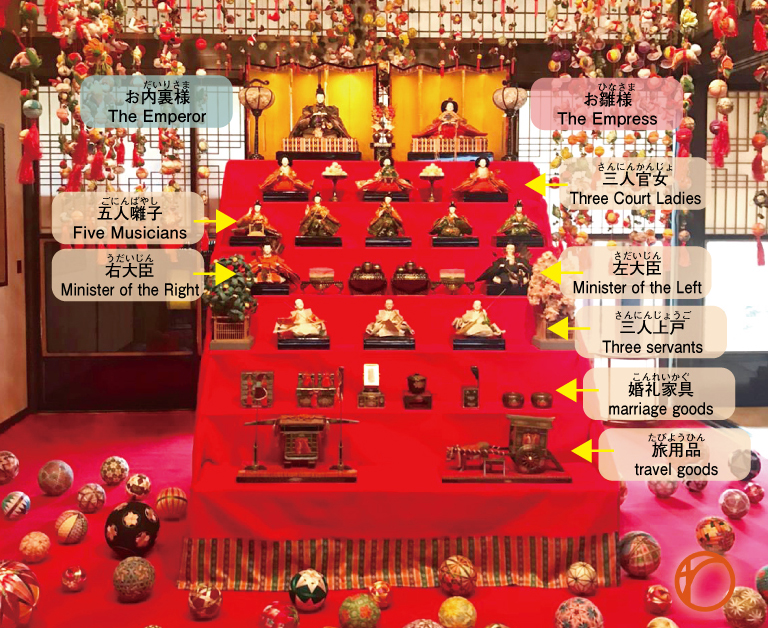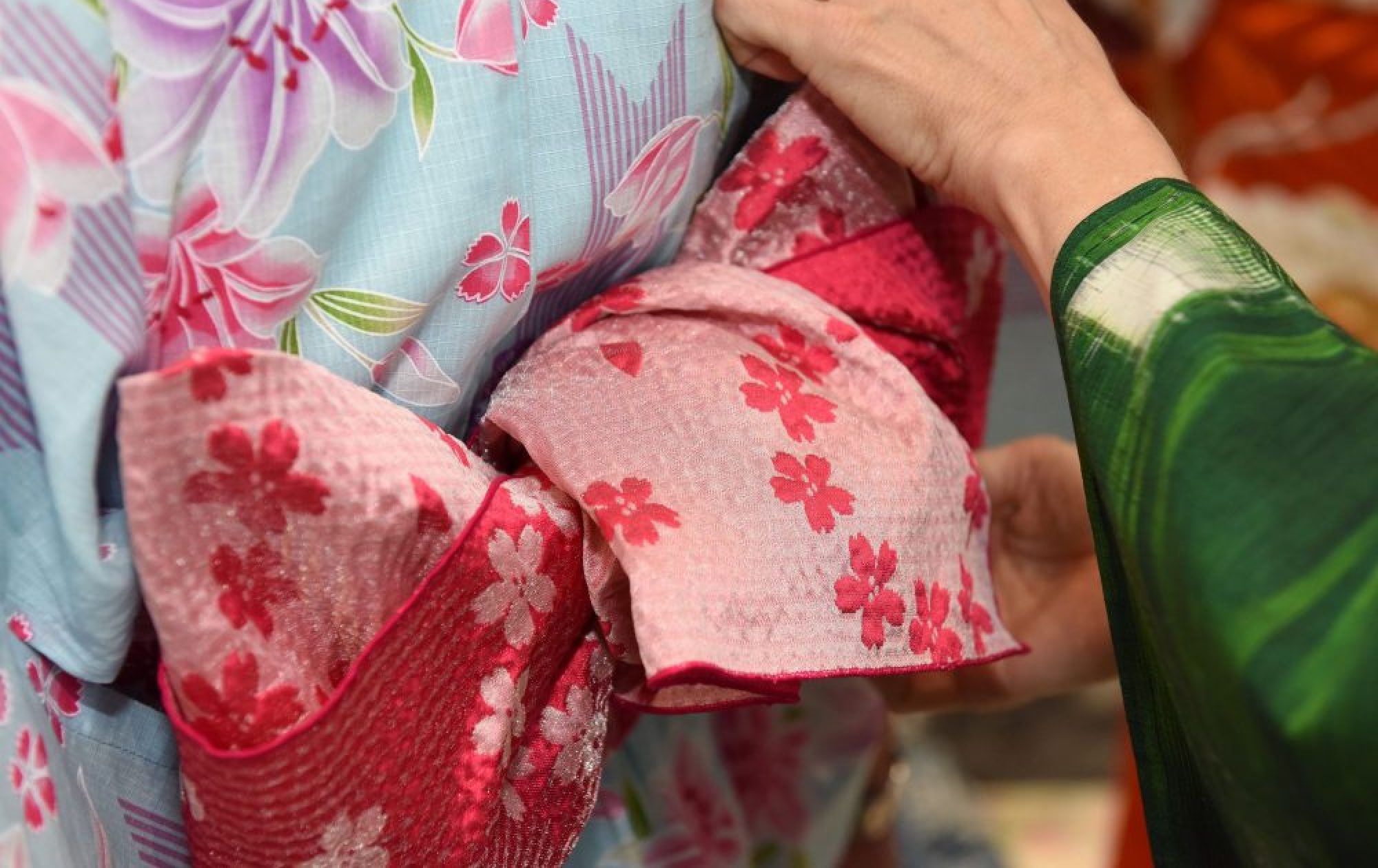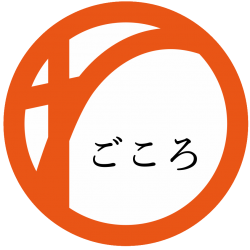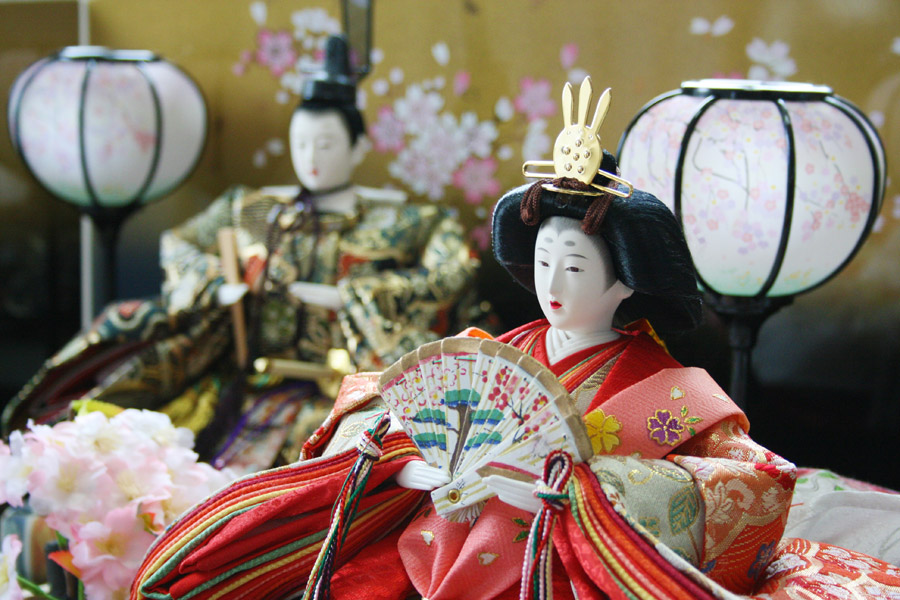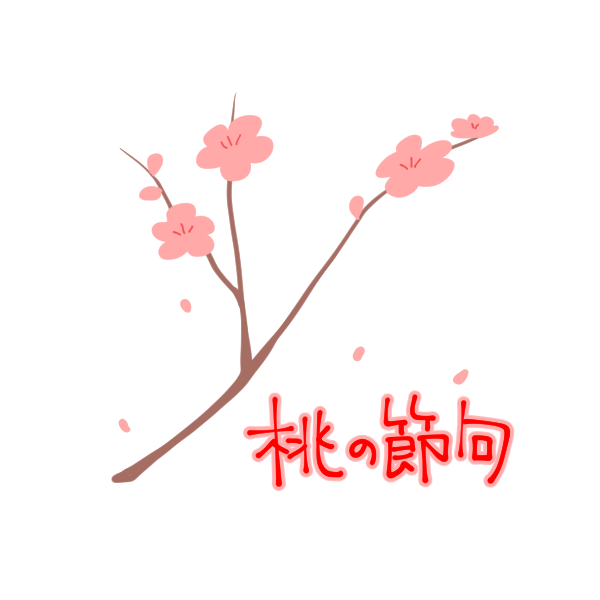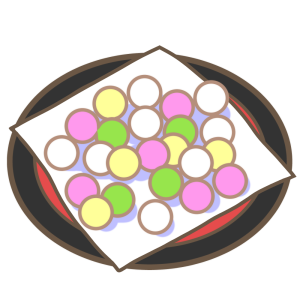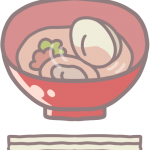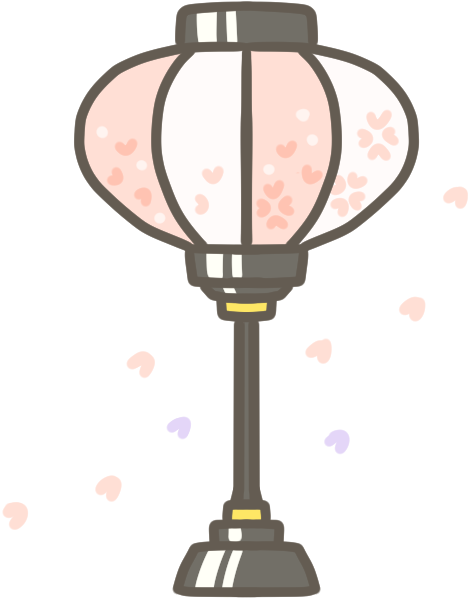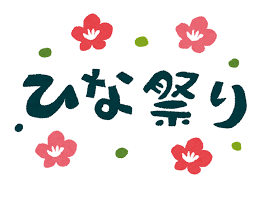
3月3日 March 3rd
桃の節句(ひな祭り)Peach festival
In Japan, we celebrate Hinamatsuri on March 3. Hina means small and adorable. It’s also called Momo-no-Sekku or Peach festival. Hinamatsuri is an occasion to pray for young girls’ growth and happiness. During Hinamatsuri, most families with girls display dolls called “Hina-ningyo (Hina=tiny & adorable, ningyo=doll)”. Hishimochi (diamond-shaped rice cakes)and peach flowers are displayed together. We eat traditional dishes like Chirashi-sushi, clam soup, Hishimochi and Hina Arare (sweet rice crackers) on Hinamatsuri.
Chirashi-sushi is a kind of sushi with many scattered toppings such as salmon roe and sashimi on vinegar rice.
日本では、3月3日に「ひな祭り」や「桃の節句」という行事があります。雛は、『小さくて愛らしい』の意味です。
女の子の幸せと健康を願い、ひな人形を飾ります。桜や桃の花を供え、ひなあられやひし餅などを飾り、ちらし寿司やハマグリお吸い物を楽しみます。
Origin
The origin of the Doll’s festival begins in China. There are five times a year when the word “Sekku”, which means the turning point of the season, and it has long been said that evil spirits are likely to enter. One of the festivals, March 3 (Joshi’s festival), is also called “Peach festival” because peach blossoms were popular, which are said to have longevity and warding off evil.
In China, it is customary to cleanse yourself in the river, and in Japan, it was called “Nagashi Hina” that transfers one’s evil spirits to a doll made of paper or straw and drains it into the river to exterminate the evil spirits.
In addition, a doll play called “Hihina play” was popular among aristocratic children in the Heian period (794-1185). It is believed that this doll play and “Sekku” were combined and became the prototype of the current “Hinamatsuri”.
With the times, the technique of making dolls has developed and fine dolls have been made, and eventually the dolls have changed from being washed away by the river to being decorated. Then, in the Edo period, it became established as an event for girls.
由来
ひな祭りの由来は中国に始まります。
季節の節目を意味する「節」をいうタイミングが一年に五回あり、昔から邪気が入りやすいとされていました。その節のひとつである3月3日(上巳(じょうし)の節句)は、長寿や魔除けの力があるとされる桃の花が親しまれていたことから「桃の節句」とも呼ばれています。
中国では川で身を清める習慣があり、それが日本では、紙や藁などで作った人形(ひとがた)に自分の邪気を移し、川に流すことで邪気祓いをする行事「流し雛」が行われていました。
また、平安時代の貴族の子どもの間で「ひひな遊び」とよばれる現在のままごとに近い人形遊びが流行していました。この人形遊びと「節句」が結びつき今の「ひな祭り」の原型になったと考えられています。
時代とともに人形作りの技術が発展し立派な人形が作られるようになり、やがて人形は川に流されるものから飾るものに変わっていきました。そして江戸時代に入り女の子のための行事として定着することとなったのです。
Hina-ningyo dolls
The Hina-ningyo dolls are wearing very luxurious kimonos and show the state of the palace.
Basically, we start decorating from the beginning of February (the day after Setsubun, around February 4th) to around mid-February, and decorate until March 3rd. There is a legend that decorating the Hina dolls in period of “USUI” (from February 18th to March 4th in 2021) will lead to good luck. There is also a funny superstition that when tidying up late, the marriage period will be late, too. Therefore it will be better to clean up early on a sunny day.
In old days, the Hina-ningyo dolls used to be placed on a magnificent 15-persons decoration with 5-7 tiers. However, since Japanese houses are not large these days, 3 tiers of 10-persons decoration or 1-tier type of Emperor & Empress decorations are popular in Japan.
ひな人形
ひな人形はとても豪華な着物を着ていて、宮中の様子を表しています。
基本的には立春(節分の翌日、2月4日頃)から2月中旬ごろにかけて飾り始め、3月3日まで飾ります。二十四節気の二番目の節気「雨水(うすい)(2021年は2月18日〜3月4日)」にひな人形を飾ると良縁に繋がるという言い伝えがあります。また、片付けが遅いと婚期が遅くなるとも言われている面白い迷信があるので、お天気の良い日に早めに片付けるのが良いそうです。
昔は大きな五〜七段もある十五人飾りの立派なひな壇のおひなさまを飾っていましたが、日本の家は広くないため、最近では3段の十人飾りや1段タイプの親王飾りが人気です。
